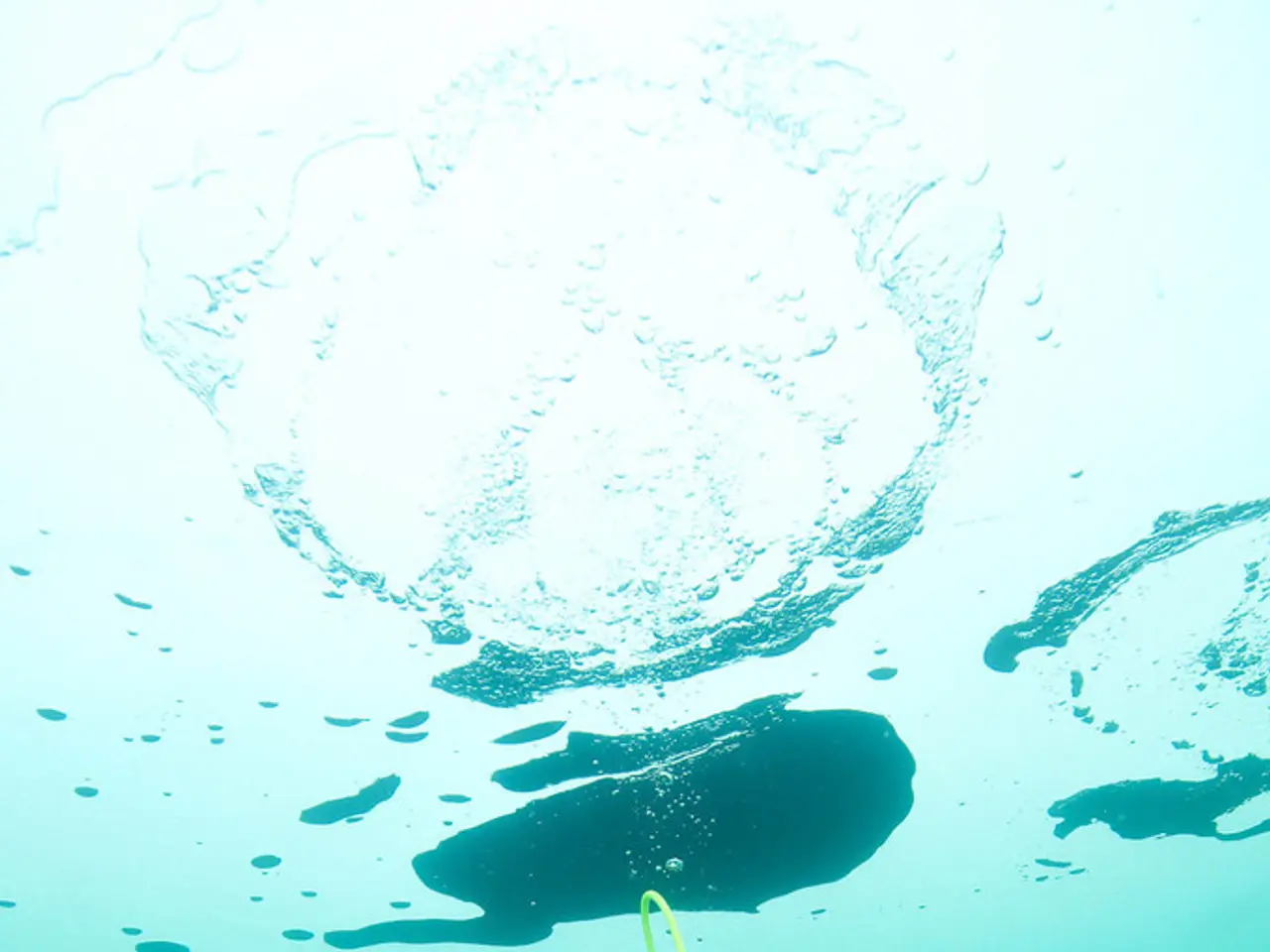Underwater Heating Test of Canon EOS R5 Camera
The Canon EOS R5, a popular camera for video enthusiasts, boasts the ability to internally record 8K video at 30p RAW, but its overheating issues have become a significant concern for underwater videographers.
Recent tests have shown that the maximum clip length for 8K RAW recording is about 29 minutes and 59 seconds, as per the camera's firmware limits. However, real-world recording duration is much less due to overheating.
In a warm water test (88F) with firmware 1.0.0, the camera could record for 15 minutes 40 seconds before overheating, with a recovery time of 9 minutes 10 seconds. A subsequent test with firmware 1.1.1 in cold water (60F) saw the recording time extended to 25 minutes 48 seconds, demonstrating the potential for improved heat dissipation in cooler environments.
The EOS R5's overheating behaviour suggests some practical considerations for underwater use. Warm water temperatures (above about 25°C/77°F) likely increase the risk of overheating and shorten recording times. Cooler water could help extend recording times by improving heat dissipation through the housing.
While the camera can theoretically record up to 29:59 per clip, overheating generally forces much shorter recordings at 8K RAW 30p—often only a few minutes—unless external cooling solutions are applied. Prolonged underwater video recording at 8K 30p RAW is therefore quite limited in practice.
It's worth noting that there is no official Canon specification for underwater temperature limits or recording durations for the EOS R5 with 8K RAW internal recording. The camera itself is not waterproof and requires an underwater housing, so environmental limits depend largely on the housing used and ambient temperature regulation.
Underwater videographers often shoot in "flat" profiles without aggressive in-camera white balance corrections and then perform color grading in post-production, since the camera’s auto settings tend to boost red channels artificially underwater.
In summary, practical underwater video recording at 8K RAW on the EOS R5 tends to be limited to short bursts in cooler environments, requiring careful planning and working around the camera’s heat buildup.
Additionally, the EOS R5 is capable of recording 8K video with internal RAW recording and 4K video at 120fps. Underwater videographers who plan to shoot 8K or 4K at 120p should expect to capture about 20-25 minutes of consecutive or non-consecutive footage in a dive.
After overheating, the waiting period before the EOS R5 can shoot again ranges from 10-20 minutes. It's also worth noting that condensation can occur in the housing when approaching the overheating shutoff.
As of now, the EOS R5 needs to be tested further to find out when underwater video shooters could run into an overheating problem. However, these challenges highlight the importance of careful planning and the use of cooling solutions for extended underwater video shoots with the EOS R5.
- To maximize recording times for underwater 8K RAW video with the Canon EOS R5, divers should opt for cooler water environments as warm water temperatures may increase the risk of overheating.
- With an underwater housing, the recording duration for the EOS R5 in 8K RAW and 4K at 120fps can extend to about 20-25 minutes per dive, though overheating might force shorter recordings.
- After overheating, the camera needs a recovery time of 10-20 minutes before it can shoot again, and condensation may appear in the housing near the overheating shutoff.
- Underwater videographers often prefer to utilize a "flat" profile for their footage underwater, performing color grading in post-production to avoid artificial red channel boosts from the camera’s auto settings.
- Despite the overheating issues with the EOS R5, it's still renowned for its ability to record 8K video internally at 30p RAW, making it an attractive choice for underwater photographers who use gadgets and technology for their work.




